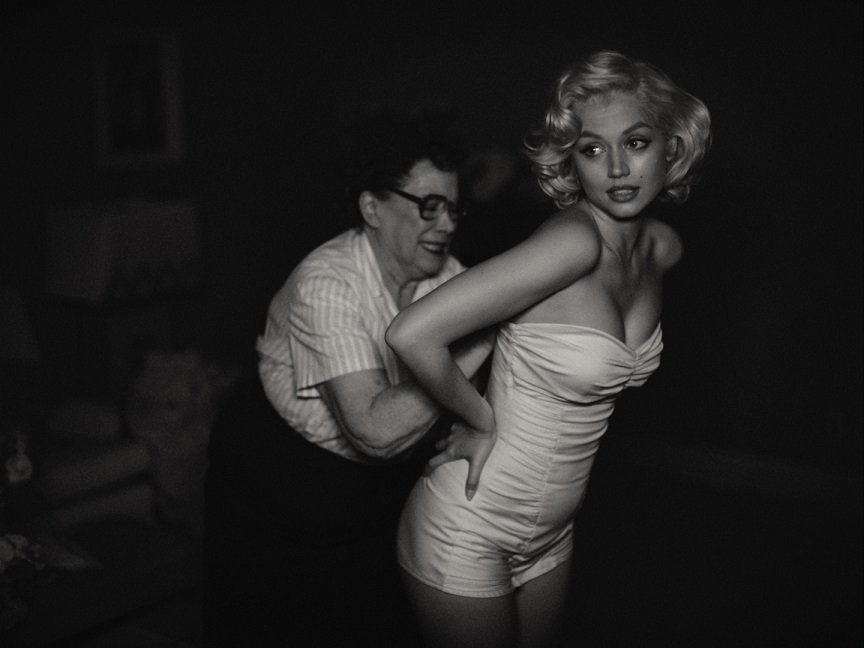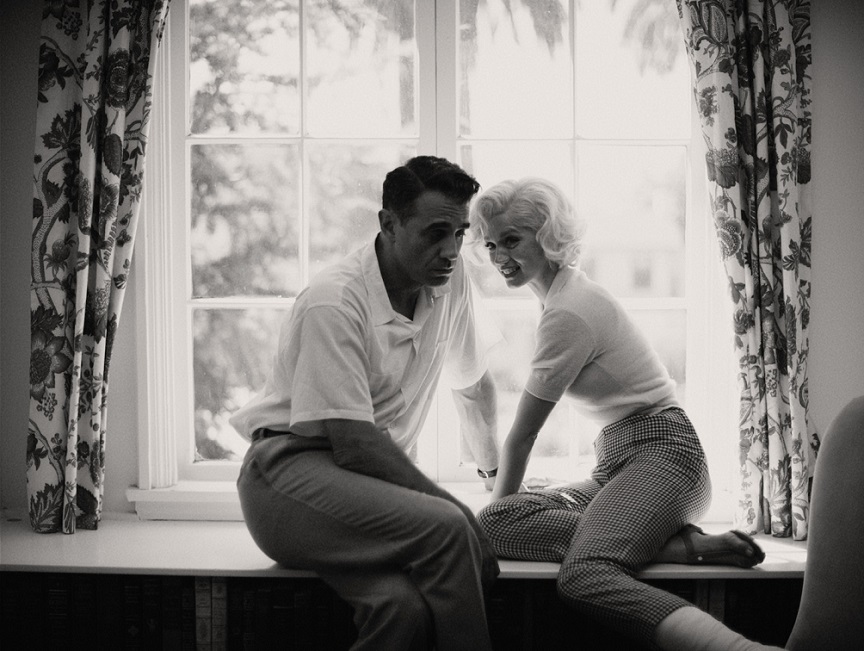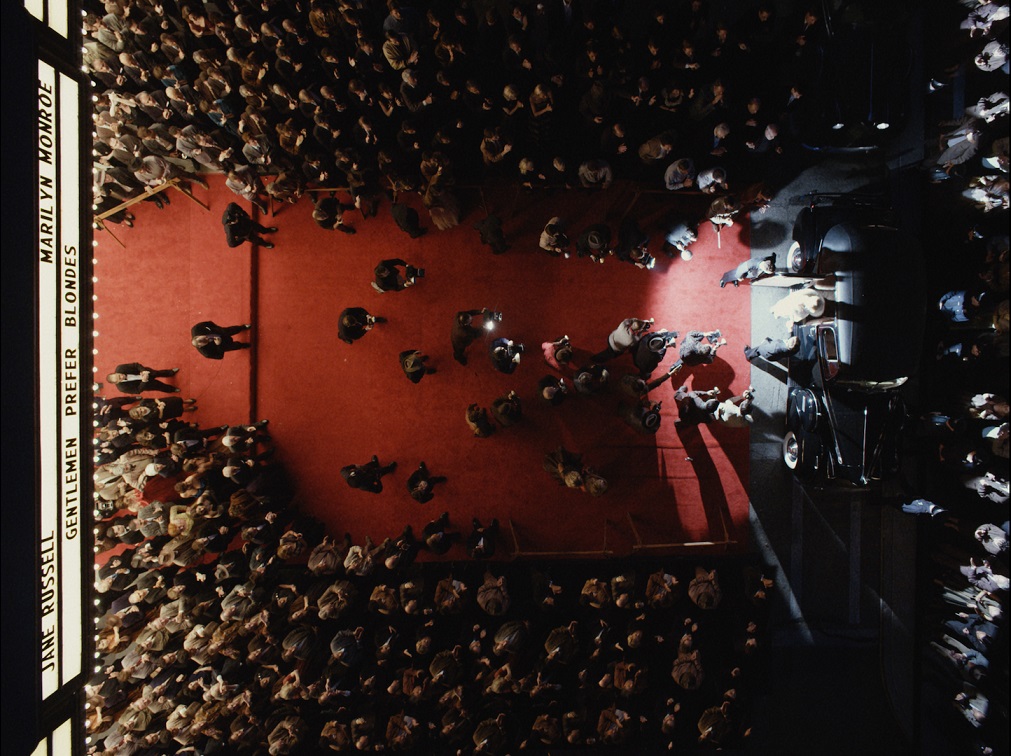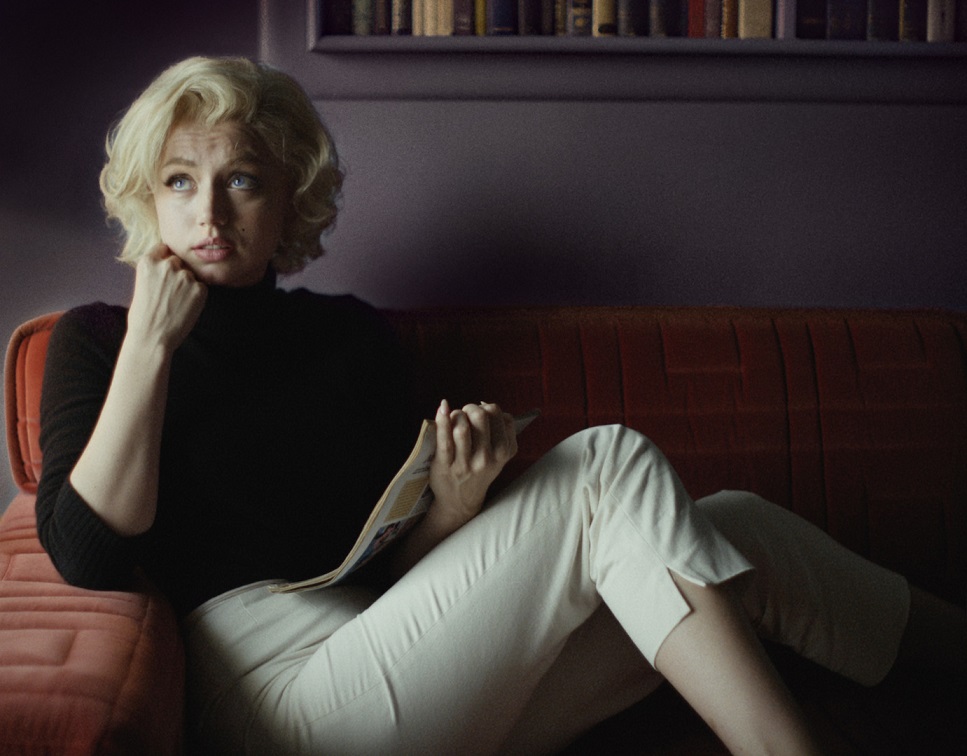
Running Time: 166 minutes
This feature is currently available to stream on Netflix.
Being a celebrity can be tough. And according to the new film Blonde, no one had a more difficult life as a star than Marilyn Monroe. However, it’s very important that viewers understand that this new feature isn’t an official biopic. Instead, it is based on a 2000 Joyce Carol Cates novel that presents a fictional account of the secretive figure’s life inspired by some of what we know about her (otherwise, there might be lawsuits pending over the portrayal of several famous individuals). The movie is a well-intentioned attempt to display how women were taken advantage of in past decades and it features an excellent lead performance. Unfortunately, the movie is overlong and delivers its message like a bag of hammers being dropped on the head.

The movie begins with a young Norma Jean Mortenson (Lily Fisher) being abused by her single mother. After a series of traumatizing incidents, she is placed in an orphanage. As an adult, Norma Jean takes on the stage name of Marilyn Monroe (Ana de Armas) and begins her career in Hollywood. But her rise to the top is an entirely unpleasant one. And things don’t improve when she becomes a full-fledged star. The actress is demeaned, beaten, raped and manipulated by various figures around her, causing psychological distress. This results in conversations with a fetus she was encouraged to abort during an unplanned pregnancy. In order to keep herself from experiencing a complete mental breakdown, Monroe clings onto hope that she might be reunited with her father after he writes to her.
The biggest positive is lead Ana de Armas. She looks the part of Monroe and embodies the role effectively. It’s a challenging one as well, as the character’s real-life in the story contrasts so much with her onscreen work and celebrity status. The performer more-than-capably depicts the star losing any optimism about her life, eventually veering into mental illness and prescription drug addiction. Monroe is put through truly harrowing events and the actress is completely committed to bringing this version of the famous figure to the screen.

But while aspects of Monroe’s life were tragic (her mother did suffer from paranoid schizophrenia and numerous reports suggest that the star’s second husband, Joe DiMaggio, was physically abusive) and some things seen could have occurred, several elements are invented and exaggerated, with almost every individual in the film taking advantage of the star. As scene after scene unfolds without very few breaks from the gloom, the amplified approach does eventually come across as repetitive and contrived.
The film uses bizarre transitions and includes several lengthy scenes that are impressive on a technical level, but otherwise wear out their welcome. The aspect ratio constantly changes from widescreen to standard Academy ratio, and even something akin to a cell phone. It also jumps back and forth from black and white to color. Some of the aspect ratio changes may have been to emphasize claustrophobia or distance between individuals and the color alterations to depict the false glamor of Hollywood, but many transitions feel completely unwarranted.

And there’s also the very strange subplot involving the lead’s interactions with an accusatory aborted fetus, as well as discussions during other pregnancies. The filmmaker is surely attempting to use the tactic to examine Monroe’s feelings of guilt and fear of being unable to conceive, but it’s a jarring tactic.
Though the message is clear and the film clearly wants to scrutinize the mistreatment and psychological toll of social attitudes towards women during the era, it still doesn’t quite land as effectively as it could. In fact, some could misinterpret the disparaging depiction of working and living among show business types and scenes of a fetus chiding the lead for aborting it as conservative and traditionalist in view. However, one assumes this wasn’t the intended effect.

Blonde is an ambitious attempt to tear down horrifically sexist, nasty and cruel attitudes towards women during the Golden Age of Hollywood. But the cavalcade of sinister supporting characters and expressionistic quirks add a sense of falseness to the tale. In the end, it seems that the perfect biopic of one of cinema’s greatest legends still has yet to be produced.


